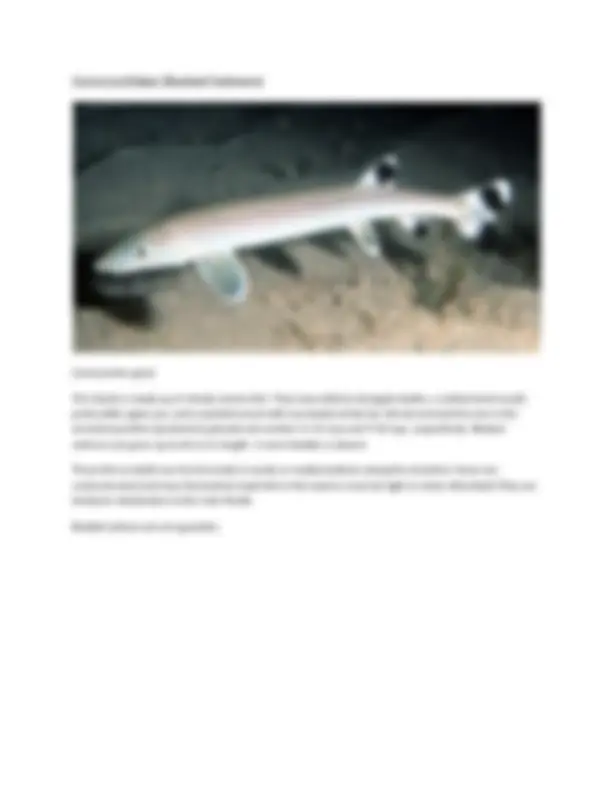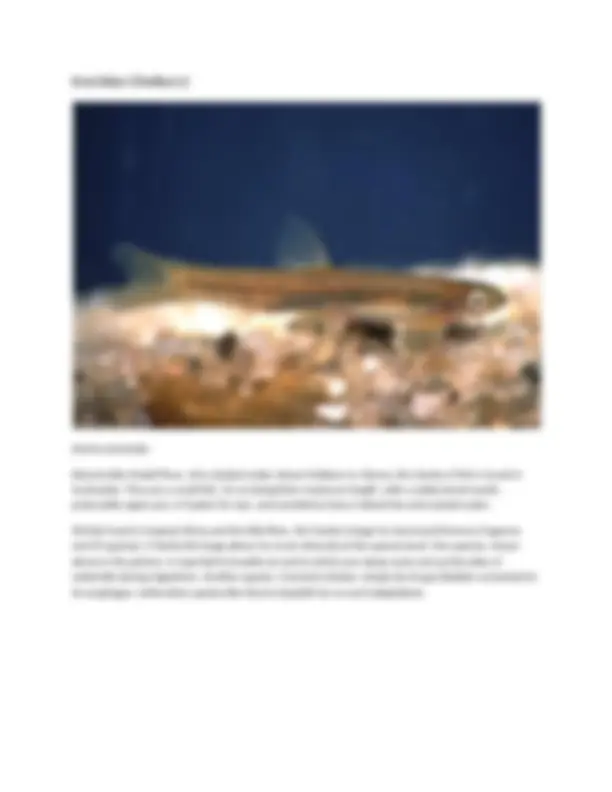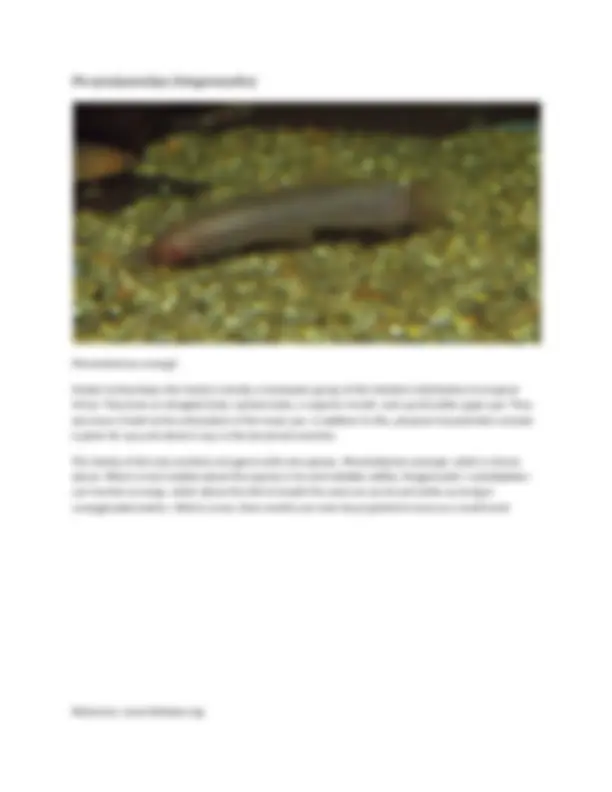





Study with the several resources on Docsity

Earn points by helping other students or get them with a premium plan


Prepare for your exams
Study with the several resources on Docsity

Earn points to download
Earn points by helping other students or get them with a premium plan
Community
Ask the community for help and clear up your study doubts
Discover the best universities in your country according to Docsity users
Free resources
Download our free guides on studying techniques, anxiety management strategies, and thesis advice from Docsity tutors
An overview of the gonorynchiformes order, commonly known as milkfish. The order consists of four families, including chanidae (milkfish), gonorynchidae (beaked salmons), kneriidae (shellears), and phractolaemidae (hingemouths). The characteristics, habitats, and life cycles of various species within each family, highlighting their importance as food sources and their unique adaptations.
Typology: Papers
1 / 5

This page cannot be seen from the preview
Don't miss anything!




The order Gonorynchiformes (rhyngchos is Greek for snout or muzzle) is commonly referred to as milkfish. However, this order is made up of four families, of which milkfish (Chanidae) is only one. This study lesson is a brief look into the diversity of the order Gonorynchiformes.
Chanos chanos Milkfish are chiefly marine and brackish fish that are known to occasionally penetrate freshwater streams. They feed on benthic algae and invertebrates and occur mostly in the benthopelagic areas at 1- 20 meters. Their highest importance is as a food source in Southeast Asia, where it is being cultured extensively in ponds. Milkfish have a terminal mouth, a nonprotrusible upper jaw, and cycloid scales. They have a pelvic fin with 11 or 12 rays, dorsal fin with 13-17 rays, anal fin with 9-11 rays, and 4 branchiostegal rays. These fish superficially resemble bonefishes but by evolution are more advanced by having 4 branchiostegal rays. Milkfish are usually a length of 1 m but can attain a maximum length of 1.7 m. They have a swim bladder. Adults occur in small to large schools near the coasts or around islands where reefs are well developed. Eggs and larvae are pelagic up to 2-3 weeks. Older larvae migrate onshore and settle in coastal wetlands (mangroves, estuaries) during the juvenile stage, or occasionally enter freshwater lakes. Juveniles and sub-adults return to sea where they mature sexually. Fish within Chanidae only spawn in fully saline water. Larvae eat zooplankton; juveniles and adults eat cyanobacteria, soft algae, small benthic invertebrates, and even pelagic fish eggs and larvae. Larvae are collected from rivers and are grown in culture ponds into juveniles, which are marketed fresh, smoked, canned and frozen. Brood stocks can be
raised and spawned in captivity to produce larvae in the hatchery. These fish can thrive and grow in water as hot as 32° C. Milkfish are dioecious, non guarding, open water/substratum egg scatterers that exhibit external fertilization. They spawn in clear shallow waters above a bottom of sand or coral and at a distance of no more than 30 km from the shore. Females spawn up to 5 million eggs which hatch in about 24 hr. The larvae seek out clear coastal and estuarine waters warmer than 23°C with 10-32 salinity and abundant phytoplankton. Spawning and fertilization take place at night. They have one clear seasonal spawning peak per year. Distribution Indo-Pacific: along continental shelves and around islands, where temperatures are greater than 20°C. Red Sea and South Africa to Hawaii and the Marquesas, north to Japan, south to Victoria, Australia. Eastern Pacific: San Pedro, California to the Galapagos.
Kneria auriculata Named after Rudolf Kner, who studied under Johann Natterer in Vienna, this family of fish is found in freshwater. They are a small fish, 15 cm being their maximum length, with a subterminal mouth, protrusible upper jaw, 6-9 pelvic fin rays, and sometimes have a lateral line and cycloid scales. Strictly found in tropical Africa and the Nile River, this family is large for Gonorynchiformes (4 genera and 24 species). A family this large allows for much diversity at the species level. One species, shown above in the picture, is reported to breathe air and to climb over damp rocks and up the sides of waterfalls during migrations. Another species, Cromeria nilotica , simply has its gas bladder connected to its esophagus, while other species like Kneria maydelli has no such adaptations.
Phractolaemus ansorgii Similar to Kneriidae, this family is strictly a freshwater group of fish limited in distribution to tropical Africa. They have an elongate body, cycloid scales, a superior mouth, and a protrusible upper jaw. They also have 2 teeth at the articulation of the lower jaw. In addition to this, physical characteristics include 6 pelvic fin rays and about 6 rays in the dorsal and anal fins. This family of fish only contains one genus with one species, Phractolaemus ansorgii , which is shown above. What is most notable about this species is its swim bladder ability. Hingemouths’ swimbladders can function as lungs, which allows the fish to breath the same air we do and while surviving in unoxygenated waters. What is more, their mouths can even be projected to serve as a small trunk. Reference: www.fishbase.org